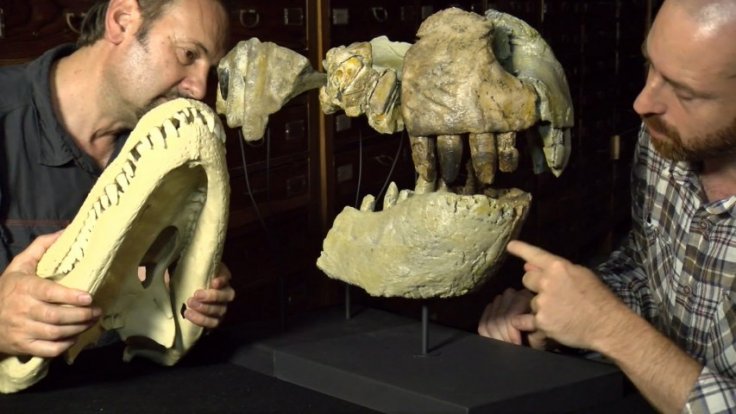
Earlier international researchers studied alligator's DNA to understand how dinosaurs had developed feathers like birds along with their scales. Now palaeontologists have discovered a 180 million-year-old Jurassic fossil of an ancient crocodile named Magyarosuchus in Hungary and it indicates that crocodiles are linked with two other species.
In Jurassic period, which spanned almost 56-million-years from the end of the Triassic Period 201.3-million-years ago, ancient crocodiles had the properties of two other species. While one of them had developed dino-like armour and used their limbs to walk on the ground, the other group looked like dolphins, as they had tail fins and flippers but no armours.
The researchers of this study said that the transitional fossil actually belonged to a different species that had developed armour and tail fins.
Mark Young, from the University of Edinburgh's School of GeoSciences, said this finding has widened the research area of crocodile's evolution mystery. He said it will help the scientists to understand that how millions of years ago this creature evolved as dolphins and killer whales.
In addition, he said that the presence of armour and tail fin have become an evidence of the crocodile's diversified characteristics in ancient period.
The research team stated in the study, which was published in a journal PeerJ, that the fossil is different from other species, as they found an odd-looking vertebra that has formed a part of the creature's tail fin.
Young and other researchers have described that the ancient species was nearly five metres long and had large, pointed teeth for grasping prey.
In the study, the researcher stated, "The unique combination of retaining heavy dorsal and ventral armour, while having a slight hypocercal tail, on the other hand, highlights the mosaic manner of marine adaptations in Metriorhynchoidea."
Compared to other creatures of this world, crocodiles remained almost same and did not adopt any drastic change in their characteristics for at least 8-million-years.
As per the University of Florida, Evan Whiting, a doctoral student at the University of Minnesota and an expert of crocodile studies, said, "If we could step back in time 8 million years, you'd basically see the same animal crawling around then as you would see today in the Southeast. Even 30 million years ago, they didn't look much different."









